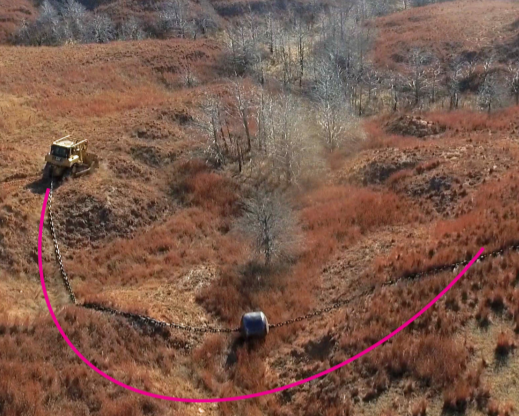Tree encroachment in Great Plains grasslands negatively impacts prairie plants and wildlife, along with decreasing forage production for livestock. Two large wildfires occurred in southern Kansas in 2016 and 2017. These wildfires burned with great intensity, killing many of the undesirable trees but leaving the dead tree skeletons on hundreds of thousands of acres. The standing dead trees within the mixed-grass prairie still provide perches for birds that spread invasive tree seeds, alter wildlife behavior, provide protection for unwanted tree seedlings, as well as interfere with livestock handling and other range management practices.
Standing dead trees (also called skeletons) on accessible upland sites are frequently removed with skid-steer mounted saws and grapples, while areas within steep drainages, rough topography, and dense stands require other techniques. Chaining offers one effective solution.

